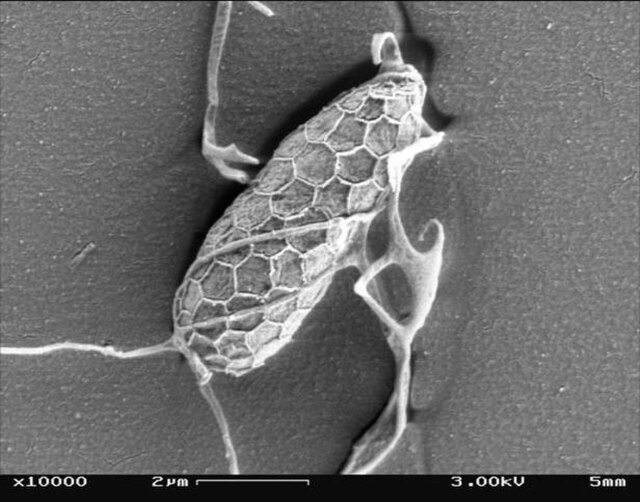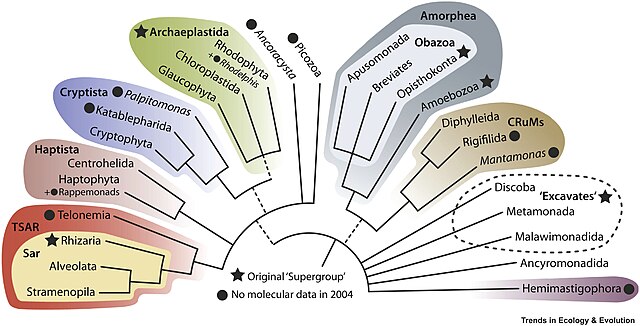Labyrinthulomycetes (ICBN) or Labyrinthulea (ICZN) is a class of protists that produce a network of filaments or tubes, which serve as tracks for the cells to glide along and absorb nutrients for them. The two main groups are the labyrinthulids and thraustochytrids. They are mostly marine, commonly found as parasites on algae and seagrasses or as decomposers on dead plant material. They also include some parasites of marine invertebrates and mixotrophic species that live in a symbiotic relationship with zoochlorella.
Labyrinthulomycetes
Aplanochytrium sp. under light microscope
Aurantiochytrium sp.
Test of Amphitrema, a testate amoeba recently included in the group
A protist or protoctist is any eukaryotic organism that is not an animal, land plant, or fungus. Protists do not form a natural group, or clade, but are a polyphyletic grouping of several independent clades that evolved from the last eukaryotic common ancestor.
Protist
Phylogenomic tree of eukaryotes, as regarded in 2020. Supergroups are in color.
Goldfuss' system of life, introducing the Protozoa within animals.
John Hogg's illustration of the Four Kingdoms of Nature, showing "Regnum Primigenum" (Protoctista) as a greenish haze at the base of the Animals and Plants, 1860








